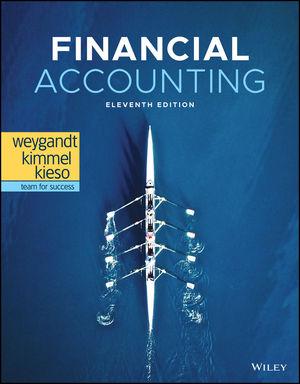Question
) Data Analytics and a Skeptical Mindset I was a senior working on a client for whom a significant revenue contract had favorable pricing terms
) Data Analytics and a Skeptical Mindset
I was a senior working on a client for whom a significant revenue contract had favorable pricing terms for the company. However, this contract was approaching its end and the pricing was expected to become less favorable.
During our audit, we decided to use data analytics to assist us in performing preliminary analytical procedures. We started with a simple analytic to analyze days in accounts receivables (A/R) over a multiyear period to determine whether there were unexpected relationships between A/R and the allowance for doubtful accounts (the "allowance") that would affect our identification and assessment of risks of material misstatement in the allowance. We then used a histogram to visualize the days in receivable over the same multiyear period.
These were pretty standard tests. However, our analysis indicated that while the number of days in A/R remained consistent, the allowance had significantly increased during the current year. This was inconsistent with what we expected to find, so I scheduled a meeting with the staff accountant to discuss the results. The staff accountant was unable to answer my questions, and I left the meeting without obtaining evidence to support the amount booked to the allowance.
My next move was to speak with the accounting manager, but he was also unable to provide any additional information to explain the results of the analytic, only clarifying that he had recorded a journal entry to increase the allowance as instructed by senior management.
The following outcomes are examples of what could happen as a result of applying appropriate professional skepticism as an auditor of this Case Study (ONE) Data Analytics and a Skeptical Mindset
Without any explanation about why the number of days in A/R remained consistent but the balance had increased, I was even more skeptical of the reasons behind the increase in the allowance.
After discussions with engagement management, we adjusted our risk assessment, classifying the risk of material misstatement as a fraud risk and a significant risk, and tailored our audit procedures as appropriate to respond to this increased risk level.
We ultimately were able to determine that senior management had been overstating the allowance for doubtful accounts by immaterial amounts for some time, with the apparent intention of reversing it when the new contract went into effect to boost its financial performance.
The use of data analytics played a valuable part in helping us uncover the unusual activity, and by exercising professional skepticism, I was able to validate the findings. This experience reminded me that it is important to think critically about the results that data analytics provide and not just focus on confirming information. It is also important that I maintain a skeptical mindset and remain steadfast in seeking answers when results indicate something may be amiss.
what is the specific facts and circumstances of the case, show the key red flags that heighten professional skepticism, and provide your evaluation for what you would do next for each red flag. Is necessary to clearly write showing red flags first and subsequently the second part of the question providing evaluation of each of those red flags for it.
Step by Step Solution
There are 3 Steps involved in it
Step: 1

Get Instant Access to Expert-Tailored Solutions
See step-by-step solutions with expert insights and AI powered tools for academic success
Step: 2

Step: 3

Ace Your Homework with AI
Get the answers you need in no time with our AI-driven, step-by-step assistance
Get Started


